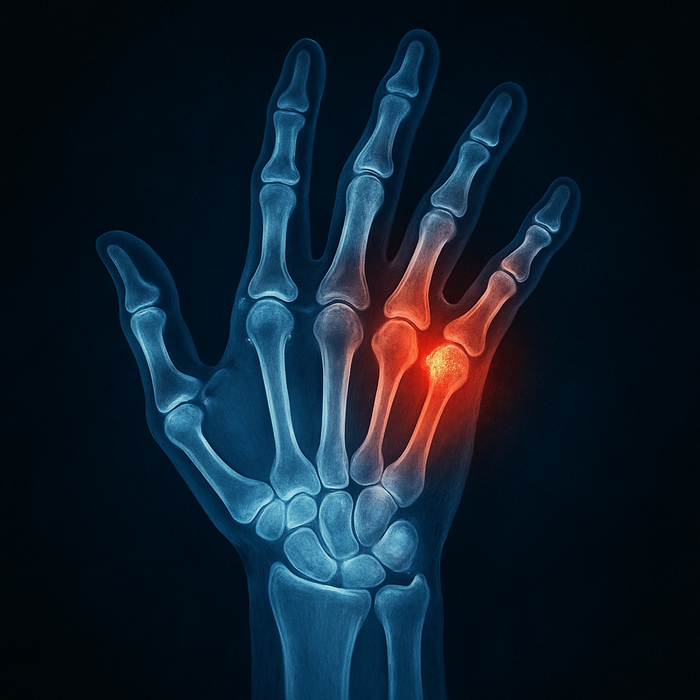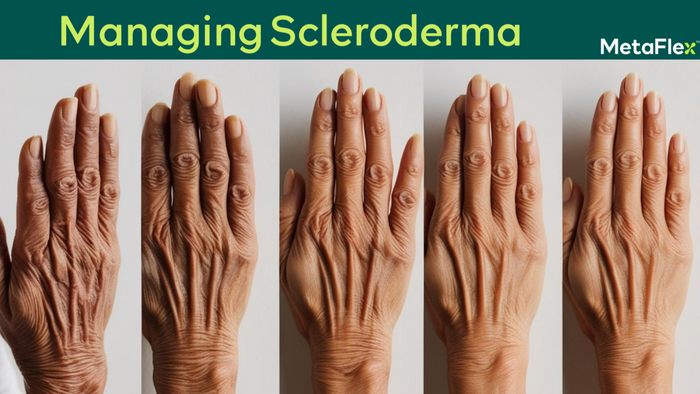4 Non-Prescription Options For Arthritis Pain Relief

Living with arthritis can be challenging, but there are several non-prescription approaches that can help manage pain and improve function. Based on current research and expert recommendations, here are three effective options for arthritis relief that don't require a prescription.
1. Heat and Cold Therapy
Heat and cold therapy are among the oldest, most accessible, and safest forms of complementary treatment for arthritis pain. These therapies work in different but complementary ways to reduce discomfort and improve joint mobility.
How Heat Therapy Works
Heat therapy increases blood flow to affected areas, delivering more oxygen and nutrients to injured tissues. When you warm up a sore joint or tired muscle, your blood vessels get bigger, which allows more relaxation for stiff muscles and joints. Heat is particularly effective for:
- Morning stiffness
- Chronic pain and discomfort
- Preparing joints for activity or exercise
- Relaxing muscles and reducing spasms
You can apply heat through warm baths or showers, heated pools, heating pads, warm towels, or therapeutic heat wraps. For maximum benefit, apply heat for about 15-20 minutes before exercise and again afterward if needed.
How Cold Therapy Works
Cold therapy works by constricting blood vessels, which helps reduce inflammation and swelling. It can also numb pain signals, providing temporary relief. Cold therapy is particularly helpful for:
- Acute flare-ups with visible swelling
- Post-exercise soreness
- Reducing inflammation after activity
Apply ice packs or frozen gel packs wrapped in a thin towel to the affected area for up to 20 minutes at a time. Some people find alternating between heat and cold provides the best relief, though experts recommend waiting a couple of hours between applications.
According to the American College of Rheumatology and the Arthritis Foundation, heat and cold therapy are conditionally recommended for people with osteoarthritis of the knee, hip, or hand, though research continues to evaluate their long-term effectiveness.
2. Compression Gloves for Hand Arthritis
For those suffering from hand arthritis, compression gloves can provide relief from pain, swelling, and stiffness. These specialized gloves work by applying gentle pressure to the hands and fingers.
How Compression Gloves Work
Compression gloves are designed to lightly squeeze the veins in your hands to support healthy circulation while potentially reducing inflammation. They may help with puffy fingers, hand pain while sleeping, and morning joint stiffness, and might improve grip strength.
Different types of compression gloves are available, including:
- Basic compression gloves that provide gentle pressure
- Thermal gloves that offer both compression and warmth
- Fingerless designs that allow for better dexterity and use of touchscreens
- Full-finger options for maximum coverage
However, it's important to note that scientific evidence supporting compression gloves is mixed. While they've been prescribed since the 1980s, recent research indicates that the main benefit may simply be the warmth they provide, with specialized arthritis gloves showing no greater effectiveness than looser-fitting alternatives.
For innovative compression gloves with built-in grip strengthening features, check out the MetaFlex arthritis relief collection or their signature MetaFlex glove, which combines compression with resistance bands to help build grip strength while relieving pain.
If you decide to try compression gloves:
- Wear them for the recommended 8 hours (often overnight)
- Ensure proper fit—too tight or too loose won't provide benefits
- Look for breathable, washable materials
- Consider consulting with an occupational therapist for recommendations specific to your condition
3. Hand and Grip Strengthening Exercises
Strengthening the muscles that support arthritic joints is one of the most effective non-medicinal approaches to managing arthritis pain and improving function. This is particularly true for hand arthritis.
Benefits of Hand Exercises
Regular hand exercises can have significant benefits for people with arthritis. In a study published in The Lancet, people with rheumatoid arthritis who did daily hand exercises showed twice the improvement in hand function as those who didn't exercise, along with better grip strength and finger flexibility.
According to occupational therapists, increasing your grip strength is "one of the best things you can do to lessen the impact arthritis has on your life," as strong hands typically mean more productive and less painful hands.
Research has also found connections between grip strength and overall health. Studies show that grip strength is a stronger predictor of all-cause and cardiovascular mortality than systolic blood pressure, underscoring the importance of maintaining hand strength.
Effective Hand Exercises
Some effective and gentle exercises for arthritic hands include:
- Gentle Fist: Start with your fingers straight, then slowly curl them into a loose fist, hold for 5-10 seconds, and release. Repeat 5-10 times on each hand.
- Finger Bends: Bend each finger individually toward your palm, hold for a few seconds, then straighten. Work through all fingers on both hands.
- Thumb Stretches: Extend your thumb away from your fingers as far as comfortable, hold for 5 seconds, then release. Repeat 5-10 times on each hand.
- Grip Strengthening: Use a stress ball, therapy putty, or specialized grip strengthener. Squeeze gently, hold for 3-5 seconds, then release. Build up repetitions gradually.
- Wrist Stretches: Extend one arm with the palm facing down, then gently pull the hand back toward your body with your other hand. Hold for 10 seconds, relax, and repeat on the other side.
These exercises should be performed gently and consistently—ideally daily or every other day. If you experience increased pain during or after these exercises, consult with a healthcare provider or physical therapist for modifications.
4. CBD Topicals for Arthritis Relief
CBD (cannabidiol) topicals have gained popularity as a potential natural remedy for arthritis pain and inflammation. While research is still emerging, several studies suggest promising benefits for joint pain sufferers.
Research on CBD for Arthritis
Scientific evidence supporting CBD for arthritis is growing. A landmark 2016 study published in the European Journal of Pain demonstrated that topical CBD significantly reduced inflammation and pain-related behaviors in a rat model of arthritis without evident side effects. The researchers concluded that "topical CBD application has therapeutic potential for relief of arthritis pain-related behaviors and inflammation."
More recently, a 2022 randomized controlled trial published in the Journal of Hand Surgery studied topical CBD (6.2 mg/mL with shea butter) in patients with thumb basal joint arthritis. The trial found that twice-daily application over two weeks "demonstrated significant improvements in thumb basal joint arthritis-related pain and disability without adverse events."
How CBD Topicals Work
CBD topicals interact with the body's endocannabinoid system—specifically with receptors in the skin, muscle tissues, and nerves. When applied directly to painful joints, CBD may:
- Help reduce inflammation in the joint
- Decrease pain signaling
- Provide localized relief without systemic effects
- Work alongside the body's natural pain management systems
Examples of CBD Products for Arthritis Relief
When selecting CBD topicals for arthritis relief, quality matters. Here are some options to consider:
-
Aura Canna Buzz Balm - Lavender & Peppermint - Features a 1:3 THC
ratio combined with soothing essential oils
-
Ayrloom Restore Balm - A balanced 1:1 THC
formulation with 1000mg total cannabinoids
- Boojum Life Deep Blue CBD Gel - Combines CBD with cooling ingredients for targeted joint relief
Visit reputable dispensaries like Boonetown NJ and Queen City NJ for a wide selection of high-quality CBD topicals specifically formulated for pain relief.
Important Considerations
When using CBD topicals for arthritis:
- Start with a small amount to test skin sensitivity
- Apply directly to the affected joints, massaging gently
- Be consistent with application for best results
- Consider additional joint support supplements like collagen, IV Drip therapy, or other alternative therapies to support your wellness holistically.
- Look for products with third-party testing and clear labeling
- Consult your healthcare provider, especially if taking other medications
While many arthritis patients report positive results with CBD topicals, individual responses vary. As the Arthritis Foundation notes, research into CBD's effectiveness for arthritis is promising but still evolving.
Taking a Comprehensive Approach
While these non-prescription options can provide significant relief for many people with arthritis, they work best as part of a comprehensive approach to arthritis management. For optimal results, consider combining these strategies with:
- Maintaining a healthy weight to reduce pressure on joints
- Following an anti-inflammatory diet
- Getting regular, appropriate exercise
- Using assistive devices when needed
- Taking over-the-counter pain relievers as recommended by your healthcare provider
Remember that arthritis management is highly individual, and what works best for one person may not be as effective for another. It's worth experimenting with different approaches to find the combination that provides the most relief for your specific situation.
Always consult with your healthcare provider before starting any new treatment regimen, even non-prescription options, especially if you have other health conditions or take medications that might interact with your arthritis management plan.



